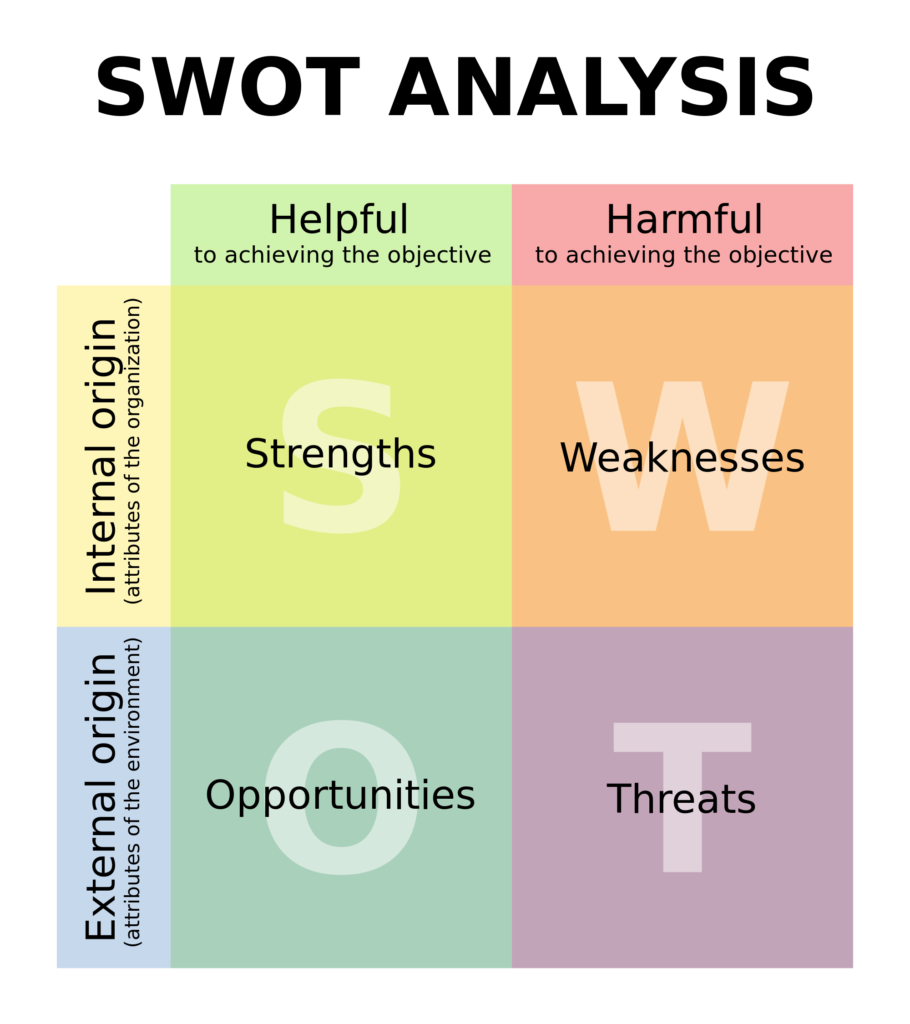According to the U.S. Bureau of Labor Statistics, around 20% of small businesses fail within the first year. By the end of their fifth year, this number increases to 50%. Once you hit the ten-year mark, only 35% of small businesses remain operational. While the lack of an effective strategic planning process isn’t the sole reason for these failures, it is certainly a contributing factor.
A lot of SMEs (Small to Medium Enterprises) are unable to define and execute a proper strategic plan. This is usually because most small SMEs do not understand strategic planning and the role it plays in managing your business.
Strategic Planning For Small Business
Following is a guide to help you understand the strategic planning process and the importance of small business strategic planning.
What Is the Strategic Planning Process?
The strategic planning process is a process used by organizations to develop a plan for achieving their long-term organizational goals. It works as a roadmap that is used to identify your strategic goals and objectives, as well as what needs to be done to achieve them.
What Steps Are Involved In the Strategic Planning Process?
The strategic planning process for small businesses is as follows:
Step 1: Analysis of Your Strategic Position
Small business strategic planning begins with analyzing your current strategic position. This involves understanding the external and internal environment of your organization and identifying your strengths, weaknesses, opportunities, and threats (SWOT analysis).
An analysis of the internal environment of your organization helps you understand your strengths and weaknesses. As a result of analyzing the external environment, you gain insights regarding the opportunities and threats present.

In order to conduct a SWOT analysis, gather input from sources such as the executives of the organization, your customers, and external market data. When you gather this information, it will help you identify your strategic position in the market. This is used to identify the strategic goals and objectives for your organization and help in developing a plan for the future.
You should also carry out what’s known as a PESTLE analysis. This involves understanding the political, economic, social, technological, legal, and environmental factors that affect your organization.
A PESTLE analysis is normally conducted before the SWOT analysis. The results of this analysis are used to identify the potential opportunities and threats in the external environment of your organization.
Step 2: Developing a Vision
The second step of strategic planning is developing a vision. Using the information gathered in the previous step, you must develop a roadmap for the future. Remember, an organization’s vision is more than just a two-line statement on your website. It is the foundation of your strategic planning process.
The strategies or objectives that you adopt must be aligned with your vision.
This is important because you developed your organization’s vision according to the condition of the market. Market conditions change on a daily basis and you must adapt accordingly. However, abandoning your vision and strategic plan in favor of short-term success will affect the sustainability of your organization.
Step 3: Developing a Mission Statement
Many organizations fail to understand the difference between the vision and the mission statement. They believe them to be interchangeable, but this is not true.
A company’s vision represents its long-term plan and where they want to go.
A mission statement, on the other hand, identifies the purpose of the company. It helps answer questions such as what the company does, who its customers are, what value they hope to provide, etc. Essentially, it helps determine how you plan to accomplish your vision.
Step 4: Establishing Organizational Values
This is another key step in the strategic planning process. In order to accomplish your mission, you must establish some organizational values.
These core values will define the culture of your organization. They will help establish how employees are expected to behave and what they must strive to achieve.
Core values are the things that you truly care about and live every day. Creating core values that are nothing more than a “wish list” is a waste of time and energy.
#ProTip
The culture and values of an organization play a very important role in its success or failure as well. What your employees do on a day-to-day basis will determine your achievements through the course of the year.
Step 5: Risk Assessment
Risk assessment is very important in strategic planning. This is an extension of the weaknesses and threats identified earlier in the first step of the planning process. You must be constantly aware of the risks and roadblocks that stand in the way of your goals and objectives.
Assessing the possible risks associated with executing your strategic plan helps you plan ahead. It allows you to take on a proactive approach so that you are able to act quickly and resolve any problems that arise.
Step 6: Developing a Small Business Strategic Plan
So far, you have identified your strategic position in the market as well as your vision, mission, and the risks associated with your plan. You are now ready to develop a strategic plan for your small business.
In order to develop your plan, you must consider the following:
- What strategies will have the greatest impact and help achieve the vision and mission of the company?
- Which types of impact should you prioritize? (For instance, are you looking to establish a value-based relationship with your customers or focus on generating revenue?)
- How do you expect your competition to behave?
- Which objectives need to be achieved urgently?
- What tactics should you employ to execute your strategies?
- What resources do you have available?
- How should these resources be allocated?
- How will you measure the progress of your strategic plan?
You must use your vision, mission statement, and organizational values as a reference when selecting strategies. This helps you discard any initiatives that do not further the progress of your organization and help improve your strategic position.
Step 7: Executing and Managing Your Strategic Plan
Once you have developed a strategic plan for your business, you can move on towards implementing it. In order to execute your strategic plan, you must first communicate it to the rest of the organization.
This is done through meetings, email, conversations and sharing the relevant documentation. Make sure your employees receive a clear outline of the organization’s vision, mission, values, goals, objectives, strategies, and tactics.
Organizations that fail to communicate these crucial aspects of a strategic plan to their employees are likely to fail.
Once the entire organization is on the same page, start executing your strategic plan. This involves setting up teams, organizing and allocating resources, guiding and motivating employees, and keeping track of the progress made.
Step 8: Reviewing the Strategic Plan
In the final stage of the strategic planning process, you must review your strategic plan and make changes accordingly. Reviewing your strategic plan involves analyzing the amount of progress made and the current performance of your team.
Compare your progress with the standard of performance that was expected. You must also re-evaluate your priorities and any shifts in the internal and external environment of the organization.
If you observe any changes that influence your strategic position, revise your strategic plan and implement it accordingly. This helps to ensure long-term success.
What are the Benefits of Strategic Planning for Small Businesses?
Strategic planning is one of the key determinants of success for an organization. Some of the key benefits of strategic planning for SMEs include:
It Helps to Minimize Risks
Economic uncertainty is a common phenomenon. As a result, businesses that do not have a functional or concrete strategic plan will find it harder to succeed.
A strategic plan can help mitigate this risk.
It provides the organization with valuable information regarding industry trends and competitors. This allows you to make better decisions. It also helps to bring things into perspective. A business is a dynamic entity that’s fueled by innovation and creativity.
A strategic plan is a great way to rekindle that entrepreneurial spirit and bring in fresh ideas that will take well in the market.
It Gives a Sense of Direction
Small businesses need to survive amongst the large corporations and competitors that exist in their niche. Having a sense of direction is very important in this regard. Fortunately, your strategic plan is a constant reference.
It helps you determine whether you are on the right track or not. It helps you keep track of the goals that have been achieved and those that need to be worked on.
Having a strategic plan in place will help you analyze your progress and allocate resources accordingly. It helps you keep your business focused on only the initiatives that support your company’s mission. This is extremely important for the survival and success of SMEs.
It Minimizes The Inefficient Use of Resources
Strategic planning is very useful in streamlining the operations of your business. It helps bring every employee on the same page. This prevents inefficient use of resources. All employees work towards the same goal and do not invest time and money in tasks that are not aligned with your goals and objectives.
It Enhances Operational Efficiency
With a strong strategic plan in place, a business has a roadmap to follow. This roadmap leads to tactical action steps of the goals they want to achieve.
Organizing functional activities, managing management, determining decision making factors and deciding how to align and budget capital/resources are just a few areas in which strategic planning can help.
In fact, a strategic plan is a great way to break down long-term goals into shorter, more achievable ones. This ultimately increases the productivity and operational efficiency of SMEs.
It Improves Employee Engagement
Another advantage of strategic planning for SMEs is that it improves employee engagement. We have already discussed how the strategic planning process helps bring every employee onto the same page.
When this happens, employees are able to take better ownership of the goals and objectives that have been defined. A strategic plan also inspires trust and motivation within employees.
This is particularly important for SMEs and their employees. A strategic plan inspires confidence in your capacity to lead the organization to success. Knowing that there is a formal strategic plan in place encourages employees to work harder. It also provides employees with some concrete goals and objectives that they can aim for.
It Provides a Formal Framework
The strategic planning process helps specify the policies, procedures, and strategies to be followed. It involves decisions regarding the deployment of resources and provides a guideline for implementing the strategic plan. When you go through this process, you establish a formal framework.
This helps managers in making better decisions in case a problem arises. It also allows employees to act in a more responsible manner. They are aware of how their actions impact the organization and whether it can influence the strategic plan in a negative way.
It Improves the Scope for Improvement
Reviewing and revising your strategic plan can help you improve the overall efficiency and profitability of the organization. You are able to analyze your existing strategies and whether they have delivered the results that were expected.
It also allows you to adopt new trends much more quickly and take on a more dynamic approach. This can help you stay afloat in spite of external and internal challenges that threaten the sustainability of the organization.
The Takeaway: Small Businesses Must Have a Strategic Planning Process in Place
Strategic planning is an extensive and dynamic process that encapsulates the organization’s vision, mission, goals, objectives, and strategies. It helps provide a defined framework under which an organization must operate.
Having an effective strategic planning process in place can benefit an SME in several ways. It improves the financial and operational efficiency of small businesses, helping them stay viable. It also plays a crucial role in identifying and establishing the values and work culture of a small business.
Most importantly, it defines the business’s vision, purpose and thus, its identity.
Working without a strategic plan can put you in a risky and uncertain business environment that can lead to the eventual demise of your small business.


